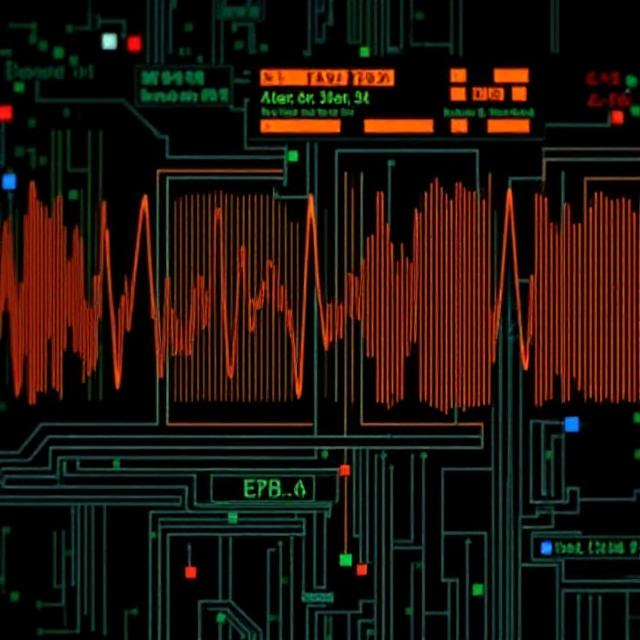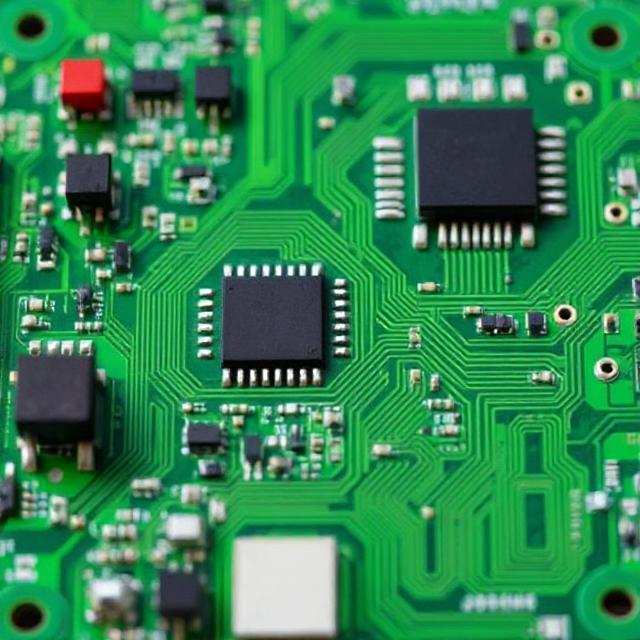1. What is the Quantum Hall Effect?
The Quantum Hall Effect is a phenomenon that occurs when electrons move through a very thin, very clean sheet of material (like a semiconductor), exposed to a magnetic field at very low temperatures (usually near absolute zero). Under these conditions, the material’s electrical resistance behaves in a strange way.
In a regular conductor, when a magnetic field is applied, the resistance usually increases. But in the Quantum Hall Effect, something different happens: the electrical resistance in the material doesn’t change in a smooth way. Instead, it jumps in discrete steps or quantized values. This is due to the quantum mechanical nature of electrons.

2. How Does the Quantum Hall Effect Work?
Here’s a breakdown of the main ideas behind the Quantum Hall Effect:
a. 2D Materials (Two-Dimensional Electron Gas):
- The Quantum Hall Effect happens in 2D materials (meaning the electrons are confined to move in two dimensions, like a thin sheet of material).
- These materials are usually semiconductors, such as gallium arsenide (GaAs), that are cooled to extremely low temperatures, where quantum effects become noticeable.
b. Applying a Magnetic Field:
- When a magnetic field is applied to these 2D materials, the electrons start to move in circular orbits due to the force exerted by the magnetic field (called the Lorentz force).
- However, because of the quantum properties of electrons, these orbits are quantized, which means they can only exist in certain specific, fixed levels or states.
c. Quantized Resistance:
- Instead of behaving like regular conductors where the resistance increases smoothly with the magnetic field, the Quantum Hall Effect causes the resistance to change in discrete steps. This is called quantized resistance.
- The resistance steps are very precise and depend only on fundamental constants like the elementary charge (e) and the Planck constant (h). This means the values of resistance in a Quantum Hall system are very stable and predictable.
In essence, the Quantum Hall Effect shows that, at the quantum level, the electrical resistance becomes quantized, meaning it only takes on certain specific values. This behavior is unique and doesn’t happen in everyday materials or conditions.
3. Types of Quantum Hall Effects
There are two main types of the Quantum Hall Effect:
a. Integer Quantum Hall Effect (IQHE):
- This is the more common type and was first discovered in 1980 by physicist Klaus von Klitzing.
- In the IQHE, the quantized resistance comes in integer multiples of a basic value called the quantum of resistance.
- This phenomenon occurs at low temperatures and high magnetic fields in 2D electron systems.
b. Fractional Quantum Hall Effect (FQHE):
- Discovered in 1982 by Robert B. Laughlin, the Fractional Quantum Hall Effect happens when the resistance is quantized in fractions rather than whole numbers.
- This occurs in more complex 2D systems, where interactions between electrons become important, leading to new quantum states of matter. The electrons behave in a highly correlated way, forming fractional charge particles.
- FQHE is a more exotic phenomenon and is important for studying strongly correlated quantum systems.
4. Applications of the Quantum Hall Effect
The Quantum Hall Effect has a variety of important applications, especially in areas of precision measurement and quantum computing.
a. Metrology and Resistance Standards:
- One of the most important applications of the Quantum Hall Effect is in precise resistance measurements.
- The Quantum Hall resistance is extremely stable and reproducible. Because its value depends on fundamental constants (the charge of an electron (e) and Planck’s constant (h)), it can be used to define resistance in the International System of Units (SI).
- This makes the Quantum Hall Effect a new standard for resistance that is more accurate and precise than traditional methods.
- In 1990, the value of the quantum resistance was used to redefine the ohm (the unit of electrical resistance), making it a fundamental constant.
b. Topological Insulators:
- The Quantum Hall Effect is also important for understanding and creating materials called topological insulators.
- A topological insulator is a material that has special surface states that conduct electricity, while its interior acts as an insulator. These materials have potential uses in quantum computing and advanced electronics.
- The FQHE is related to the study of these materials, and researchers use the effect to explore new types of quantum states that might be useful in future technology.
c. Quantum Computing:
- The study of the Fractional Quantum Hall Effect (FQHE) could play a role in the development of quantum computers.
- The unique correlated electron states observed in the FQHE may be useful for creating topologically protected qubits, which could form the basis for fault-tolerant quantum computing. This is an exciting area of research because it promises to make quantum computers more stable and less prone to errors.
d. Spintronics:
- The Quantum Hall Effect can also be relevant in spintronics, a field that uses the spin of electrons (in addition to their charge) for processing information.
- Understanding quantum effects like the QHE helps in designing new materials and devices for spintronic applications, which are expected to be faster and more energy-efficient than traditional electronics.
5. Conclusion
In simple terms, the Quantum Hall Effect is a fascinating phenomenon that occurs in very thin, 2D materials under extreme conditions of low temperature and high magnetic fields. It shows how electrical resistance can behave in discrete, quantized steps at the quantum level. The QHE has led to major advances in precise resistance measurement, the development of topological insulators, and holds promise for quantum computing and spintronics.
Its discovery not only gave us a deeper understanding of quantum mechanics but also introduced new ways to define electrical resistance with unmatched precision, opening doors to new technologies.











